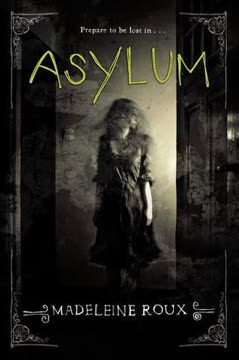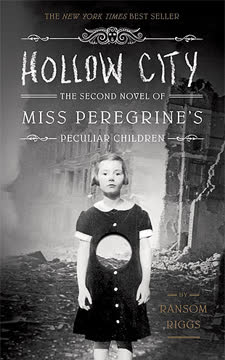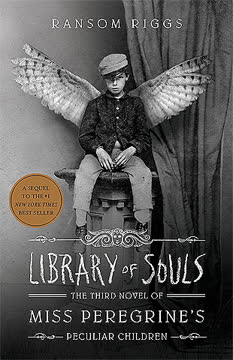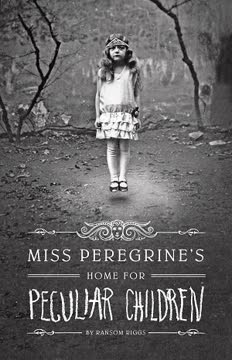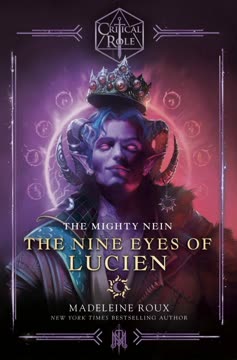Plot Summary
Arrival at Brookline's Shadows
Dan, a history-obsessed teen, arrives at the New Hampshire College Prep program, only to find the student dorms closed for renovations. All students are relocated to Brookline, a former psychiatric hospital with a grim reputation. The building's oppressive atmosphere immediately unsettles Dan, who senses a strange familiarity and unease, as if the place itself is watching him. He meets his meticulous roommate, Félix, and quickly realizes that Brookline's past is not as dormant as the university claims.
Unsettling Friendships Form
At a welcome party, Dan meets Abby, an energetic artist, and Jordan, a witty, guarded math prodigy. The three quickly form a close-knit group, united by their outsider status and curiosity. Their friendship is tested by the building's eerie ambiance and Dan's growing sense of not belonging. As they explore the campus and share personal stories, subtle tensions and insecurities begin to surface, hinting at deeper psychological struggles within each of them.
Forbidden Office Discovery
Driven by curiosity and a mysterious old photograph, Dan convinces Abby and Jordan to sneak into a forbidden, abandoned office in Brookline's basement. Inside, they find disturbing relics: patient records, medical instruments, and a wall of haunting photographs depicting patients undergoing brutal treatments. The experience is both fascinating and traumatic, especially for Abby, who becomes fixated on a photo of a lobotomized girl. The trio's bond deepens, but so does their entanglement with Brookline's dark history.
Photographs of Suffering
The group is shaken by the images of suffering and cruelty, particularly the photo of a young girl with a scar on her forehead. Abby feels a strange connection to the girl, while Dan is haunted by the sense that he's seen these rooms before. The photographs become a symbol of the blurred line between help and harm, genius and madness. Each friend begins to experience nightmares and intrusive thoughts, as if the past is bleeding into their present.
Nightmares and Lost Time
Dan starts suffering from vivid nightmares and blackouts, often waking up disoriented and unsure of what's real. He dreams of being both patient and doctor, experiencing the horrors of Brookline firsthand. Meanwhile, strange messages and emails appear on his devices, referencing patients and treatments he's never heard of. The boundaries between his identity and the asylum's history begin to dissolve, raising questions about his own sanity and connection to the place.
The Sculptor's Legend
Research reveals Brookline once housed Dennis Heimline, "The Sculptor," a notorious serial killer who posed his victims like statues. Dan becomes obsessed with Heimline's fate, especially after learning the killer's patient number matches the cryptic messages he's been receiving. The legend of the Sculptor, and the possibility he was "cured" or never found, casts a shadow over the group, fueling paranoia and fear that the past is not truly dead.
Secrets in the Basement
The friends discover a hidden passage leading to a lower level: a surgical amphitheater where unspeakable experiments took place. Dan is struck by déjà vu, convinced he's seen these rooms in his dreams. They find records of criminally insane patients and evidence of unethical treatments. The group's unity begins to fracture under the psychological strain, as each is forced to confront personal demons and the possibility that Brookline's evil is alive and targeting them.
Messages from the Past
Dan starts receiving anonymous, threatening notes and emails, some in his own handwriting, referencing the "Hydra" and urging him toward the basement. The notes blur the line between external threat and internal breakdown, as Dan questions whether he's being manipulated or losing his mind. The messages escalate, implicating him in the violence occurring at Brookline and suggesting a sinister connection between his identity and the asylum's director.
The Hydra's Threat
A series of violent incidents rocks the campus: a student is found dead, another attacked, and Dan's roommate Félix is implicated. Dan himself becomes a suspect, as evidence and his own memory lapses point toward his involvement. The police presence intensifies, and paranoia spreads among the remaining students. Dan's friendships with Abby and Jordan are strained to the breaking point, as trust erodes and everyone becomes a potential suspect.
Family Ties Revealed
Abby discovers her own family's connection to Brookline: her aunt Lucy was a patient, possibly the girl in the photograph. This revelation destabilizes her, as she grapples with guilt, anger, and the urge to find closure. Dan, meanwhile, learns that he may be related to the infamous director Daniel Crawford, deepening his fear that he's destined to repeat the past. The friends' personal histories become inextricably linked to Brookline's legacy of trauma.
Violence Strikes Again
Another attack leaves Félix and others hospitalized, and Dan is placed under police watch. The group is torn apart by suspicion, guilt, and the sense that something supernatural or psychological is driving the violence. Dan's blackouts worsen, and he fears he may be responsible for the attacks. The line between victim and perpetrator blurs, as the true nature of Brookline's influence comes into focus.
Descent into Madness
Isolated and desperate, Dan's grip on reality slips. He finds evidence that he's been writing the threatening notes to himself, possibly under the influence of the director's spirit or his own fractured psyche. The asylum's history of madness and abuse seems to be repeating itself through him. Meanwhile, Abby and Jordan try to help, but are themselves drawn into the web of fear and suspicion.
The Director's Legacy
Dan uncovers the full extent of the director's experiments: a quest for immortality through the manipulation of minds and bodies. The director's writings reveal a philosophy that genius and madness are intertwined, and that true progress requires sacrifice. Dan realizes he's been channeling the director's thoughts, and that the asylum's evil is not just historical, but living on through those who enter its walls.
The Trap is Set
A final, ominous note lures Dan and Abby into the basement at midnight. Jordan, initially left behind, follows to help. The trio is trapped by a hidden assailant—Félix, now fully possessed by the spirit of the Sculptor or the director. The friends are bound and prepared for a gruesome "treatment," as the cycle of violence threatens to claim new victims.
Possession and Betrayal
Félix, under the influence of Brookline's evil, confesses to the attacks and murders, blaming Dan for past experiments and seeking revenge. Dan, struggling with his own identity and the director's legacy, nearly succumbs to the urge to continue the violence. Only the intervention of Jordan and Abby, and Dan's refusal to become the director, breaks the cycle. The friends subdue Félix, but not before the boundaries between self and other, sanity and madness, are irrevocably blurred.
The Final Confrontation
The police arrive, and the truth of Brookline's horrors is partially revealed. Abby's aunt Lucy, traumatized but alive, is found and reunited with her family. Félix is hospitalized, his fate uncertain. Dan, Abby, and Jordan are left to process the trauma, unsure of what was real, what was supernatural, and what was the product of their own minds. The asylum is finally closed, but its legacy lingers.
Aftermath and Unanswered Questions
As the summer ends, Dan, Abby, and Jordan prepare to return to their lives, forever changed by their experiences. The bonds of friendship are tested but endure. Dan is left with lingering doubts about his own sanity and the possibility that Brookline's evil is not truly gone. A final note, signed by the director, suggests that the cycle may begin again, leaving the door open for further hauntings.
Characters
Dan Crawford
Dan is an intelligent, introverted teen with a fascination for history and psychology, shaped by his experience in foster care and adoption. His outsider status makes him both vulnerable and curious, drawing him to Brookline's mysteries. Dan's psychological journey is central: he is plagued by nightmares, blackouts, and a growing fear that he is connected—by blood or fate—to the asylum's monstrous director. His relationships with Abby and Jordan anchor him, but his sense of self is constantly threatened by the possibility of inherited madness or supernatural possession. Dan's arc is one of self-discovery, as he struggles to resist the pull of Brookline's darkness and define his own identity.
Abby Valdez
Abby is energetic, creative, and emotionally open, but harbors deep wounds from her family's history. Her connection to Brookline is personal: her aunt Lucy was a patient, possibly the girl in the haunting photograph. Abby's empathy makes her both a source of comfort and a target for the asylum's lingering evil. She becomes obsessed with uncovering the truth about her family, even as it threatens her mental health. Abby's journey is about confronting generational trauma, seeking closure, and learning to balance compassion with self-preservation.
Jordan
Jordan is a sharp-tongued, openly gay math prodigy who uses humor and sarcasm to mask his insecurities. Estranged from his family, he is desperate for acceptance and stability, which he finds in his friendship with Dan and Abby. Jordan's nightmares and paranoia intensify as the group delves deeper into Brookline's secrets, and he becomes both a skeptic and a voice of reason. His arc is about overcoming fear, trusting others, and finding the courage to face both external and internal threats.
Félix Sheridan
Félix is Dan's organized, socially awkward roommate, whose obsession with order masks deeper vulnerabilities. As the story progresses, Félix becomes the unwitting vessel for the asylum's evil—whether supernatural or psychological—transforming into the antagonist who enacts the Sculptor's legacy. His possession and actions raise questions about free will, identity, and the contagious nature of trauma. Félix's arc is tragic, as he is both victim and perpetrator, embodying the dangers of repression and the loss of self.
The Director (Daniel Crawford)
The former director of Brookline, Daniel Crawford, is a shadowy presence whose writings and philosophy permeate the narrative. Obsessed with curing madness and achieving immortality, he blurs the line between genius and cruelty, progress and atrocity. His legacy is both literal (possibly as Dan's ancestor) and psychological, as his thoughts and actions echo through the generations. The director represents the seductive danger of unchecked ambition and the ways institutions can perpetuate harm under the guise of help.
Dennis Heimline ("The Sculptor")
Heimline is the legendary patient whose crimes and possible survival haunt the students. Whether as a literal ghost, a psychological archetype, or a role assumed by Félix, the Sculptor embodies the fear that evil cannot be contained or cured. His story is a cautionary tale about the limits of treatment and the persistence of violence.
Lucy Valdez
Lucy is the girl in the photograph, a victim of Brookline's experiments who survives but is forever changed. Her presence is a reminder of the real human cost of institutional abuse and the ways trauma can echo through families. Lucy's eventual reunion with Abby offers a glimmer of hope and healing amid the horror.
Paul and Sandy
Paul and Sandy provide stability and support for Dan, representing the possibility of love and acceptance outside the cycle of trauma. Their concern for Dan's well-being grounds him, even as he fears he may be beyond help.
Joe McMullan
Joe is a student leader who tries to enforce the rules and protect the students, but becomes the first victim of the Sculptor's violence. His death marks the escalation of danger and the failure of authority to contain the asylum's evil.
Sal Weathers
Sal is a townie obsessed with Brookline's dark history, whose warnings are dismissed until it's too late. His murder underscores the real-world consequences of the past's unresolved horrors and the dangers of seeking truth in a world that prefers denial.
Plot Devices
Haunted Setting as Psychological Mirror
The asylum is not just a backdrop but an active force, reflecting and intensifying the characters' psychological struggles. Its labyrinthine corridors, hidden rooms, and relics of suffering serve as metaphors for repressed trauma, inherited guilt, and the thin line between sanity and madness. The setting blurs the boundaries between past and present, reality and hallucination, making the characters' descent into fear both literal and symbolic.
Unreliable Narration and Memory Lapses
The use of memory lapses, nightmares, and dissociative episodes keeps both Dan and the reader uncertain about what is real and who can be trusted. This device heightens suspense, implicates Dan as both detective and suspect, and mirrors the experience of mental illness. The unreliable narration also allows for supernatural ambiguity, as the source of evil may be internal, external, or both.
Found Documents and Photographs
The discovery of patient records, photographs, and the director's writings serves as both exposition and plot catalyst. These artifacts bridge the gap between generations, implicate the present in the crimes of the past, and provide clues that drive the investigation. They also symbolize the persistence of trauma and the dangers of unexamined history.
Possession and Identity Blurring
The motif of possession—whether supernatural or psychological—raises questions about free will, inherited guilt, and the contagiousness of madness. Dan's fear of becoming the director, Félix's transformation into the Sculptor, and Abby's identification with her aunt all illustrate the porous boundaries between self and other, past and present.
Foreshadowing and Symbolism
The use of recurring symbols (the photograph, the Hydra, the basement, the notes) and foreshadowing (Dan's sense of déjà vu, Abby's obsession with the girl) creates a sense of inevitability and doom. These devices reinforce the theme that the past is never truly past, and that confronting it is both necessary and dangerous.
Analysis
is a psychological horror novel that explores the enduring impact of trauma, the dangers of institutional power, and the struggle for self-definition in the face of inherited darkness. Through its haunted setting and unreliable narration, the book blurs the line between supernatural and psychological horror, suggesting that the real monsters are both within and around us. The story interrogates the legacy of abuse—how the sins of the past echo through families, institutions, and individuals—and the difficulty of breaking free from cycles of harm. Ultimately, Asylum warns that confronting history is essential but perilous, and that healing requires both courage and the willingness to face uncomfortable truths. The novel's ambiguous ending, with the director's note promising a return, leaves readers questioning the nature of evil and the possibility of escape, making it a resonant parable for our own haunted times.
Last updated:
FAQ
Synopsis & Basic Details
What is Asylum about?
- A Summer Program's Dark Twist: Asylum follows Dan Crawford, a history-obsessed teenager attending a summer college prep program. Due to renovations, students are housed in Brookline, a former psychiatric hospital with a dark past, immediately unsettling Dan with its oppressive atmosphere and a strange sense of familiarity.
- Unraveling Hidden Horrors: As Dan and his new friends, Abby and Jordan, explore the forbidden areas of Brookline, they uncover chilling secrets about the asylum's unethical treatments and its most notorious patient, "The Sculptor", a serial killer who posed his victims.
- A Descent into Psychological Terror: The deeper they delve, the more their reality blurs with Brookline's history, as Dan experiences vivid nightmares, memory lapses, and receives cryptic messages, leading him to question his own sanity and his unsettling connection to the asylum's infamous director.
Why should I read Asylum?
- Immersive Psychological Horror: Readers seeking a blend of supernatural dread and psychological suspense will find Asylum compelling, as it masterfully blurs the lines between inherited madness, genuine haunting, and the characters' deteriorating mental states. The unsettling atmosphere of Brookline itself becomes a character, amplifying the internal struggles of the protagonists.
- Unique Found Footage Aesthetic: The novel is enhanced by unsettling, real-life photographs of abandoned asylums, which are integrated into the narrative, adding a chilling layer of verisimilitude and a unique visual dimension to the horror experience. This stylistic choice deepens the sense of authenticity and dread, making the fictional events feel disturbingly real.
- Exploration of Deep Themes: Beyond jump scares, Asylum delves into profound themes such as the legacy of trauma, the ethics of mental health treatment, the blurred boundaries between genius and madness, and the struggle for identity. It prompts readers to consider how the past can haunt the present, both literally and metaphorically, and the pervasive nature of institutional abuse.
What is the background of Asylum?
- A Real-World Inspired Setting: The fictional Brookline asylum is inspired by real psychiatric institutions and their often-dark histories, drawing on the historical context of antiquated and inhumane mental health treatments like lobotomies and electroshock therapy. This grounds the horror in a disturbing reality, reflecting a period when "cures" were often more torturous than the illnesses themselves.
- New England Gothic Atmosphere: Set in New Hampshire, the novel leverages the classic New England gothic tradition, with its dense forests, isolated towns (Camford), and old, imposing stone buildings. This geographical and architectural backdrop enhances the sense of isolation, decay, and lingering malevolence, typical of the genre.
- Cultural Commentary on Mental Health: The story subtly critiques historical approaches to mental health, highlighting the societal tendency to "lock away" those deemed different or dangerous, rather than truly heal them. The narrative questions the very definition of "madness" and "sanity," suggesting that the institutions themselves could be agents of psychological harm.
What are the most memorable quotes in Asylum?
- "La locura es relativa. Depende de quién tiene a quién encerrado en qué jaula." (Madness is relative. It depends on who has whom locked in what cage.): This quote, attributed to Ray Bradbury within the story, encapsulates the novel's central theme of perception and confinement, questioning who truly holds power and defines sanity within Brookline's walls. It highlights the subjective nature of mental illness and the oppressive environment of the asylum.
- "No hay genio sin un gramo de locura." (There is no genius without a touch of madness.): This Aristotelian quote, found in Dan's notes, directly links the intellectual pursuits of the students with the dark history of the asylum's director, Daniel Crawford. It foreshadows Dan's own struggle with his identity and the fine line between brilliance and psychological instability, suggesting a dangerous allure to the director's "vision."
- "Nos veremos pronto. Daniel Crawford." (We'll see you soon. Daniel Crawford.): The chilling final line of the book, left on a note for Dan, serves as a powerful, ambiguous cliffhanger. It implies that the malevolent spirit or influence of the director, and perhaps the asylum's evil, is not truly vanquished, leaving readers with a lingering sense of dread and the possibility of a continuing cycle of horror.
What writing style, narrative choices, and literary techniques does Madeleine Roux use?
- First-Person Limited Perspective: The story is primarily told from Dan Crawford's first-person perspective, immersing the reader directly into his deteriorating mental state and unreliable perceptions. This narrative choice heightens suspense and paranoia, as the reader experiences Dan's confusion and fear firsthand, blurring the lines between reality and hallucination.
- Integration of Visuals and Text: Roux uniquely incorporates actual vintage photographs of asylums and medical procedures throughout the text, creating a "found footage" or "documentary" feel. This multimedia approach enhances the horror, lending a disturbing authenticity to the fictional events and making the historical context viscerally real.
- Pacing and Atmosphere: The novel employs a slow-burn psychological build-up, gradually escalating the tension and dread through atmospheric descriptions of Brookline and Dan's internal turmoil. This deliberate pacing allows the unsettling atmosphere to permeate the narrative, culminating in bursts of intense action and shocking revelations that keep the reader on edge.
Hidden Details & Subtle Connections
What are some minor details that add significant meaning?
- Félix's Physical Transformation: Initially described as "lanky" and "scrawny," Félix rapidly gains muscle and changes his habits, drinking "Muscle Force" and exercising. This subtle physical shift, initially attributed to protein shakes, foreshadows his later possession by the Sculptor, who was known for his strength and ability to "pose" victims, hinting at the physical manifestation of the entity's power.
- The Director's Lenses and Dan's Vision: Dan finds the director's "less rusted" lenses and tries them on, seeing his own reflection as the director. This seemingly minor detail is a powerful visual metaphor for Dan's inherited connection and the blurring of his identity with the director's, suggesting that he is literally seeing the world through the director's eyes and inheriting his "vision" or madness.
- The Music Box's Recurring Melody: The "disjointed, off-key" music box found in Lucy's cell, playing an "ancient" song, reappears in Dan's vision of the Sculptor's bar massacre. This musical motif subtly links Lucy's trauma to the Sculptor's atrocities, implying a deeper, perhaps shared, source of suffering or a common thread of the asylum's influence on its victims and perpetrators.
What are some subtle foreshadowing and callbacks?
- Dan's Initial Premonition: Upon arriving at Brookline, Dan feels a voice whisper, "Regresa ahora" (Go back now), and senses the building is "observing him." This early, almost throwaway line subtly foreshadows the asylum's active, malevolent presence and its specific interest in Dan, hinting at his predetermined connection to the place.
- The "Hydra" Nickname: Professor Douglas nicknames Dan, Abby, and Jordan "the Hydra" due to their tendency to stick together. This seemingly innocuous nickname later becomes a direct callback in a threatening note ("¿Cómo matas a una Hidra?"), foreshadowing the attempts to break their bond and isolate Dan, mirroring the mythological creature's vulnerability to a "strike to the heart."
- Jordan's Fear of Expulsion: Jordan's repeated, almost obsessive, fear of being expelled ("definitely not the first day") is initially played for comedic effect but subtly foreshadows the severe consequences of their rule-breaking and the real-world stakes of their investigation, culminating in his family's disapproval and his desperate need for a safe haven.
What are some unexpected character connections?
- Pastor Bittle's Family Link: The kind pastor who helps Abby and Dan is revealed to be Ted Bittle, a relative of Frank Bittle, one of Brookline's "homicidal" patients. This connection subtly implies that the trauma and "madness" of Brookline extended beyond its walls, affecting the town's residents and suggesting a generational legacy of the asylum's influence, even on seemingly normal citizens.
- Sal Weathers's Wife and Lucy Valdez: Sal Weathers's wife, who reacts violently to Dan's name, is later revealed to be Lucy Valdez, Abby's aunt. This unexpected connection highlights the profound, lasting trauma inflicted by Brookline's experiments, showing how a victim of the asylum's past (Lucy) is still deeply affected and capable of violence in the present, directly linking the historical horrors to the current events.
- Félix's Unseen Vulnerability: Despite his meticulous nature, Félix's rapid physical transformation and his later confession of being "too easy to mold" reveal an unexpected vulnerability. This suggests that his rigid adherence to order was a fragile defense mechanism, making him a prime target for the Sculptor's possession and highlighting the psychological toll of repression.
Who are the most significant supporting characters?
- Yi, the Unwitting Victim: Jordan's roommate, Yi, initially appears as a minor character, a cello player. However, his attack, described as being "posed like a sculpture," serves as crucial evidence that the Sculptor's methods are still active, directly escalating the threat and forcing Dan and Abby to confront the reality of the danger.
- Joe McMullan, the First Casualty: The well-meaning prefect, Joe, is the first victim found "sculpted" on the stairs. His death is the catalyst that transforms the students' curiosity into genuine fear and suspicion, bringing police involvement and forcing the main trio to confront the deadly reality of Brookline's lingering evil.
- Sal Weathers, the Dismissed Prophet: The local conspiracy theorist, Sal Weathers, is initially dismissed as a "paranoid" eccentric. However, his detailed website and his violent reaction to Dan's name prove his knowledge of Brookline's true horrors, and his subsequent murder validates his warnings, making him a tragic figure whose truth was ignored.
Psychological, Emotional, & Relational Analysis
What are some unspoken motivations of the characters?
- Dan's Quest for Belonging: Beyond his academic interest in history and psychology, Dan's deep dive into Brookline's past is subconsciously driven by his own history in the foster care system. His "fascination for social machines" and systems that "make decisions for people" reflects a personal need to understand control and belonging, seeking answers about his own origins and identity in the asylum's records.
- Abby's Need for Closure: Abby's intense obsession with the lobotomized girl's photograph and her aunt Lucy is fueled by an unspoken desire for familial closure and healing. Her parents' marital strife and her father's silence about Lucy suggest a deep-seated family trauma that Abby instinctively seeks to resolve, hoping to mend her own fractured family by understanding the past.
- Jordan's Search for Acceptance: Jordan's witty sarcasm and initial reluctance to engage with Brookline's mysteries mask a profound fear of rejection, stemming from his parents' disapproval of his sexuality. His loyalty to Dan and Abby, despite his skepticism, reveals a deep-seated need for a chosen family and a safe space where he can be his authentic self, making his eventual betrayal by Félix particularly devastating.
What psychological complexities do the characters exhibit?
- Dan's Dissociative Identity Struggle: Dan exhibits a complex struggle with his identity, experiencing vivid hallucinations, memory lapses, and even writing notes to himself in the director's handwriting. This "mild dissociative disorder" (as his therapist calls it) blurs the line between his own psyche and the director's lingering influence, making him question if he is merely a victim or an unwitting participant in the asylum's horrors.
- Abby's Empathic Overidentification: Abby's strong empathy leads her to overidentify with the suffering patients, particularly Lucy. Her desire to "rescue" the photograph and her aunt's memory borders on obsession, highlighting the psychological toll of vicarious trauma and the danger of becoming too deeply immersed in another's pain, potentially losing herself in the process.
- Jordan's Coping Mechanisms: Jordan's use of humor and intellectualism (his "impossible problem") serves as a sophisticated coping mechanism to distance himself from emotional pain and the chaos around him. His nightmares, however, reveal the fragility of these defenses, showing how the asylum's horrors penetrate his carefully constructed emotional barriers, forcing him to confront his deepest fears.
What are the major emotional turning points?
- Dan's First Vision of the Cell: When Dan first "sees" his room as a stone cell with blood-stained shackles, it's a pivotal moment that shatters his rational worldview and introduces the terrifying possibility of a supernatural or psychological connection to Brookline. This experience marks the beginning of his personal descent into the asylum's madness.
- Abby's Revelation of Lucy's Identity: Abby's discovery that Lucy Valdez, the lobotomized girl, is her aunt, is a profound emotional turning point. It transforms the abstract horror of Brookline into a deeply personal trauma, fueling her determination to uncover the truth and forcing her to confront her family's hidden history.
- Jordan's Nightmare Confession: Jordan's raw confession of his recurring nightmare—being electrocuted by faceless doctors while his parents watch—is a major emotional turning point for the trio. It reveals the depth of his personal anxieties about his sexuality and family rejection, and it also validates Dan's own terrifying visions, solidifying their shared experience of Brookline's psychological torment.
How do relationship dynamics evolve?
- The Trio's Initial Unity and Subsequent Strain: Dan, Abby, and Jordan initially form a strong, supportive bond, united by their outsider status and shared curiosity about Brookline. However, as the asylum's influence intensifies and personal secrets are revealed, their trust is severely tested, leading to arguments, suspicion, and a temporary fracturing of their friendship, as seen in their strained interactions at meals.
- Dan and Félix's Unsettling Roommate Dynamic: What begins as a seemingly innocuous, if awkward, roommate relationship between Dan and Félix subtly shifts into a predatory one, with Félix (as the Sculptor) manipulating Dan from the start. Félix's initial "help" in finding the office and his later physical transformation highlight the insidious nature of the possession and the complete subversion of their initial dynamic.
- Abby and Jordan's Shifting Alliance: Abby and Jordan's relationship evolves from casual bus acquaintances to a deeply supportive friendship, with Abby often acting as Jordan's confidante regarding his family issues. Their shared trauma at Brookline strengthens their bond, even when they disagree with Dan, demonstrating a resilient loyalty that helps them navigate the escalating horrors.
Interpretation & Debate
Which parts of the story remain ambiguous or open-ended?
- The Nature of the "Possession": The novel leaves it ambiguous whether Félix is truly possessed by the spirit of the Sculptor/Director, or if he is suffering from a severe psychological break, perhaps influenced by the asylum's oppressive atmosphere and his own repressed issues. The narrative provides evidence for both supernatural and psychological interpretations, allowing readers to debate the true source of the evil.
- Dan's Inherited Madness vs. External Influence: It's unclear to what extent Dan's dissociative episodes and his connection to the director are due to a genetic predisposition ("in his blood") or if they are purely a result of Brookline's malevolent influence and the psychological stress he endures. The ending, with the director's note, suggests a lingering, perhaps inescapable, connection.
- The Asylum's True "Closure": While the program is cancelled and Brookline is "closed indefinitely," the final note from "Daniel Crawford" implies that the asylum's evil is not truly contained or gone. This leaves the ending open to interpretation: has the cycle of trauma been broken, or is it merely dormant, waiting for new victims to return to its "twisted roots"?
What are some debatable, controversial scenes or moments in Asylum?
- The Ethics of the Director's "Cures": The director's writings, particularly his pursuit of "a truly extraordinary life" through "macabre" sacrifices and his belief that "genius is an expectation," present a highly controversial view of mental health treatment. This raises ethical debates about the historical abuses in asylums and the fine line between scientific ambition and monstrous cruelty.
- Abby's Decision to Confront Her Father: Abby's choice to immediately tell her father about Lucy, despite warnings from Dan and Jordan, is debatable. While driven by a desire for truth, it causes immense distress to her father, prompting questions about the timing and method of revealing traumatic family secrets, and whether immediate "truth" is always the best path to healing.
- Dan's Final Act of Violence Against Félix: Dan's decision to physically subdue Félix, even contemplating using the scalpel, is a controversial moment. It forces readers to question whether he is succumbing to the director's influence or simply acting in self-defense. This scene blurs the line between hero and potential perpetrator, highlighting the corrupting power of the asylum's environment.
Asylum Ending Explained: How It Ends & What It Means
- The Climax: Confrontation and Subdual: The story culminates in Dan, Abby, and Jordan confronting Félix in the surgical amphitheater. Félix, revealed to be under the influence of the Sculptor/Director, confesses to the attacks on Joe, Yi, and Sal Weathers, seeking "revenge" on "Daniel Crawford." Dan, struggling with the director's influence, nearly succumbs to violence but ultimately resists, and the trio subdues Félix, who is then taken to a psychiatric hospital.
- Partial Resolution and Lingering Trauma: Abby successfully reunites with her aunt Lucy, who is revealed to be Sal Weathers's traumatized wife, providing a glimmer of hope and closure for her family. The police arrest the man who killed Joe (though his connection to the Sculptor is dismissed), and the summer program is cancelled. However, the ending leaves many questions unanswered, particularly regarding the true nature of Félix's condition and the extent of the asylum's supernatural influence.
- The Unbroken Cycle: "Nos veremos pronto. Daniel Crawford.": The final, chilling note found by Dan, signed "Daniel Crawford," signifies that the malevolent presence or legacy of the director is not truly gone. This suggests that the "madness" of Brookline is cyclical and perhaps inescapable, implying that Dan, despite his resistance, remains connected to its dark history. The ending serves as a powerful warning that some traumas, once unleashed, can never be fully contained, leaving the characters, and the reader, forever haunted.
Review Summary
Asylum received mixed reviews, with an average rating of 3.64 out of 5. Some readers found it creepy and enjoyable, praising the atmospheric setting and plot twists. Others criticized the underdeveloped characters, predictable storyline, and lack of genuine scares. Many felt the book didn't live up to comparisons with Miss Peregrine's Home for Peculiar Children. The inclusion of photographs was divisive, with some finding them enhancing the creepy atmosphere while others thought they were poorly integrated. Overall, opinions varied widely on the book's effectiveness as a young adult horror novel.
Download PDF
Download EPUB
.epub digital book format is ideal for reading ebooks on phones, tablets, and e-readers.
